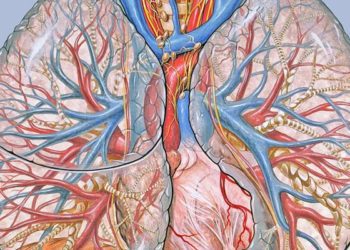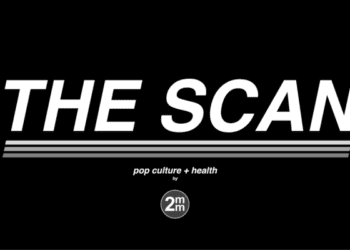Pneumococcal vaccine associated with a decrease in pneumonia hospitalizations
Image: PD
1. Since the pneumococcal vaccine PCV7 was introduced in 2000, the US saw an overall annual reduction of an estimated 168,000 hospitalizations for pneumonia per year.
2. The greatest reductions in annual hospitalization rates for pneumonia were at the extremes of age with children < 2 years old experiencing an estimated decline of 47,000 hospitalizations per year and adults > 85 years old experiencing a decline of 73,000 hospitalizations per year.
3. Much of the benefit in adults appears to have been indirect, through herd immunity as PCV7 was targeted toward young children, while adults accounted for most of the decline in overall hospitalizations.
Evidence Rating Level: 2 (Good)
Study Rundown: The 7-valent pneumococcal conjugate vaccine (PCV7) was added to routine childhood immunizations in 2000. Early studies had shown a significant reduction in pneumococcal disease in the United States starting in 2000. However, it was not known if these reductions would be sustained, and further studies suggested that a rise in pneumoccocus serotype 19A infections – a serotype not covered by the vaccine – may have diminished the initial success of the vaccine. This study, however, seems to provide reassurance that the vaccine has significantly reduced the overall burden of pneumococcal disease in the United States. Perhaps most interesting is the fact that the vaccine was targeted toward young children, but that adults experienced the most dramatic reductions in hospitalizations. This reduction it would appear is due to the vaccine’s severing of the chain of infection and providing an overall ‘herd immunity.’ Going forward, the PCV13 vaccine has now replaced the PCV7 vaccine, and further studies should explore the effects of the added serotypes.
Click to read the study, published today in NEJM
Relevant Reading: Sustained reductions in invasive pneumococcal disease
In-Depth [retrospective cohort study]: This study sought to determine if previously observed reductions in pneumonia hospitalizations were sustained for the decade after the introduction of PCV7. The authors drew data from the Nationwide Inpatient Sample database (NIS), which gathers data from approximately 8 million hospitalizations annually from hospitals throughout the United States. Pneumonia hospitalizations were determined using ICD-9-CM codes. Inpatient data was gathered from 1997-2009. The data was used to estimate annual pneumonia hospitalizations among different age groups and was stratified by time period; 1997-1999 (Pre-PCV7), 2001-2006 (Early PCV7) and 2007-2009 (Late PCV7). Pneumonia hospitalization rates for children under 2 declined substantially during the Early and Late PCV7 time periods, while older children showed minimal changes. Adults also displayed sustained reductions in pneumonia hospitalizations beginning in 2000, with the greatest reduction occurring in adults older than 85. The overall annual reduction of pneumonia hospitalizations among all age groups was an estimated 168,000 per year.
By Akira Shishido, M.D. and Mitalee Patil
© 2013 2minutemedicine.com. All rights reserved. No works may be reproduced without written consent from 2minutemedicine.com. Disclaimer: We present factual information directly from peer reviewed medical journals. No post should be construed as medical advice and is not intended as such by the authors or by 2minutemedicine.com. PLEASE SEE A HEALTHCARE PROVIDER IN YOUR AREA IF YOU SEEK MEDICAL ADVICE OF ANY SORT. Content is produced in accordance with fair use copyrights solely and strictly for the purpose of teaching, news and criticism. No benefit, monetary or otherwise, is realized by any participants or the owner of this domain.







